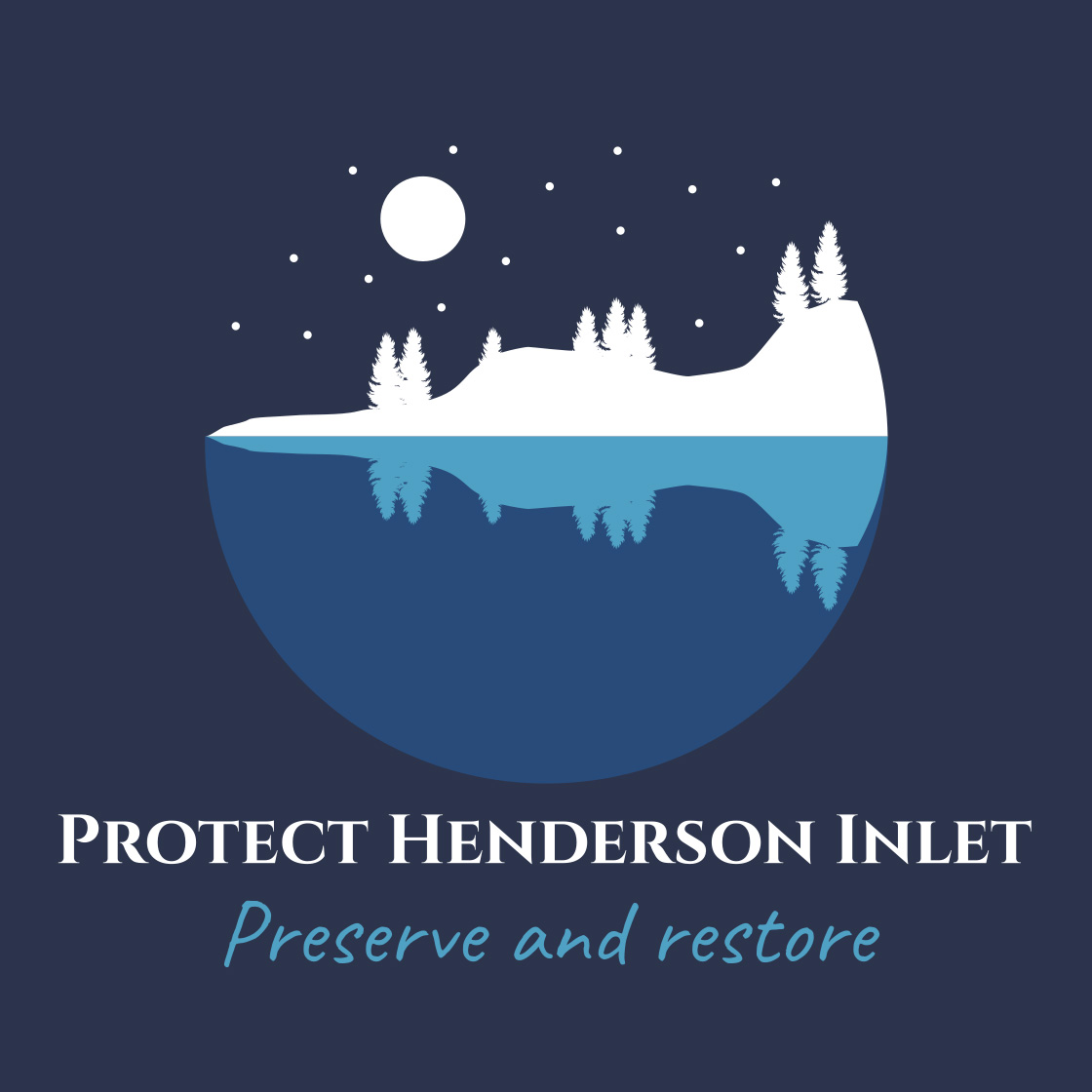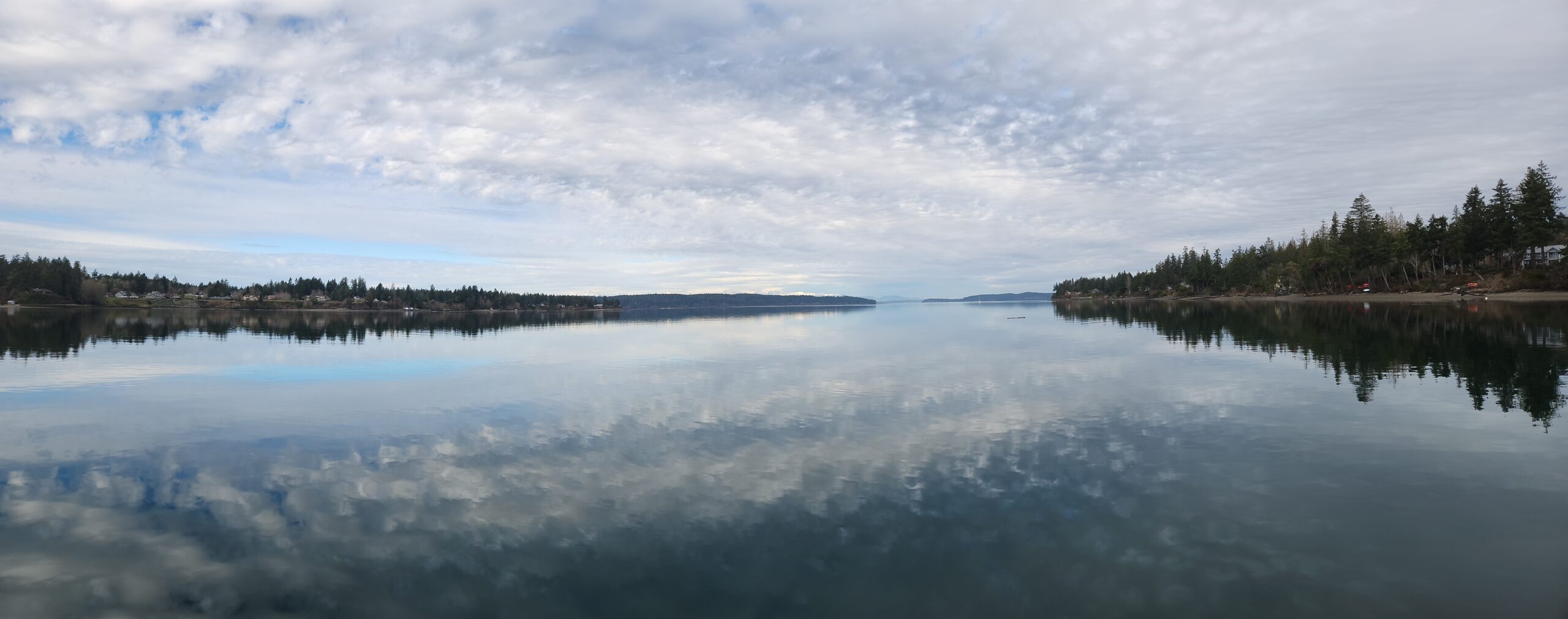The Spring 2023 Trial Planting of Eelgrass in the Inlet
At low tide on Sunday, May 7th, Otis Beach, on the northeast edge of Henderson Inlet, again welcomed Jeff Gaeckle, seagrass ecologist at the Washington State Department of Natural Resources (DNR). It was planting day!
We were excited to see the plants in person and found their strands broader and less delicate than expected.
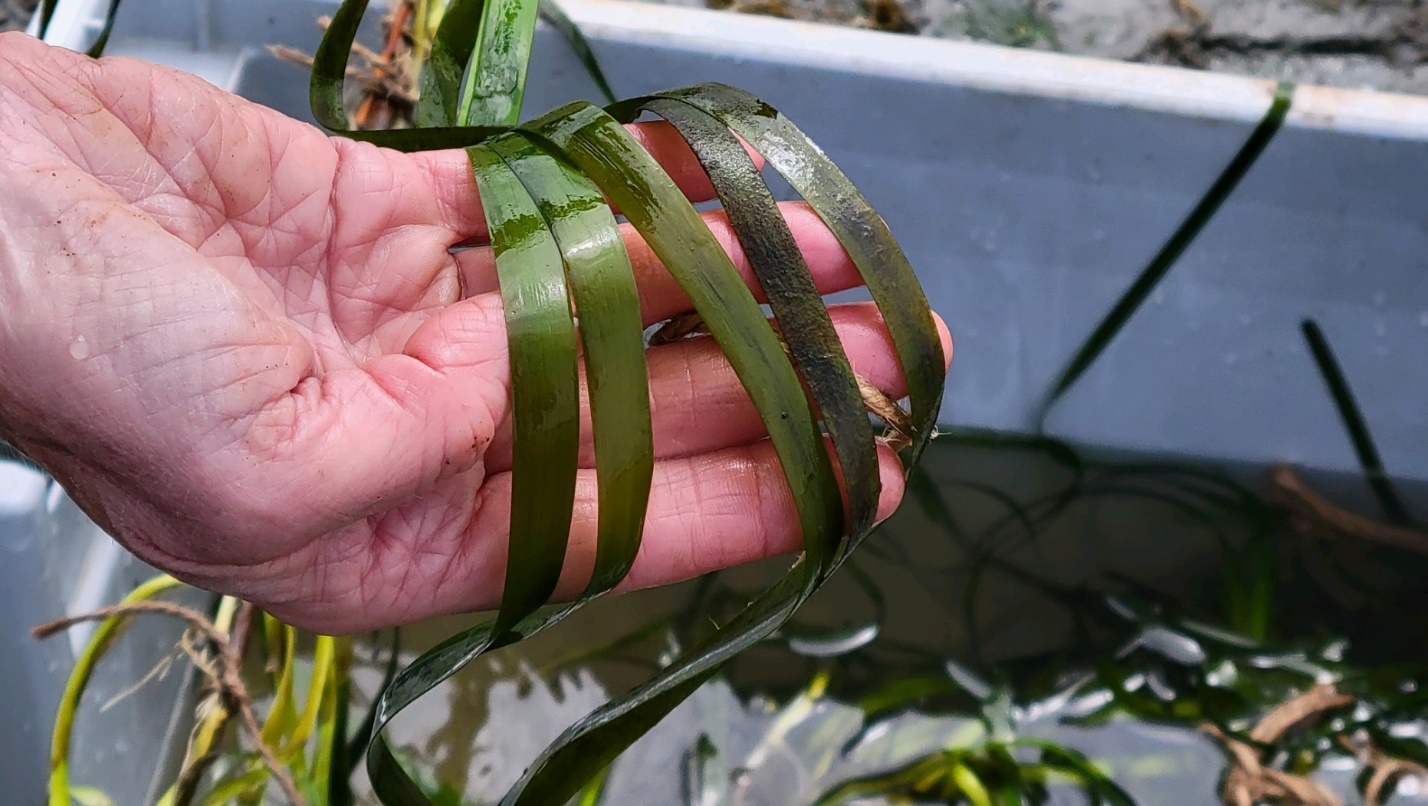
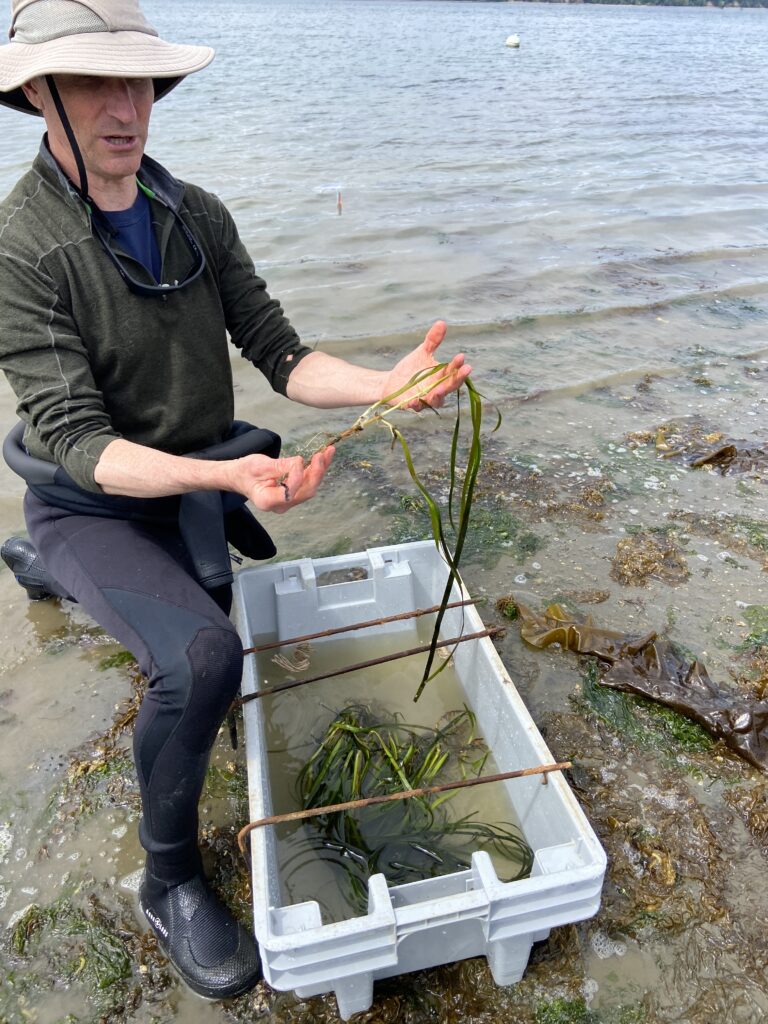
Besides the eelgrass itself, Jeff also brought thin, smooth, ‘L’ shaped rods of rebar and twine to tie the rhizomes to the rods.
He taught us how to attach the grasses to the rods by tying them on with twine in about two places between nodes. In half an hour’s time, using overhand or square knots, 11 rods were ready to go. Each straight section of rod held about a dozen rhizomes.
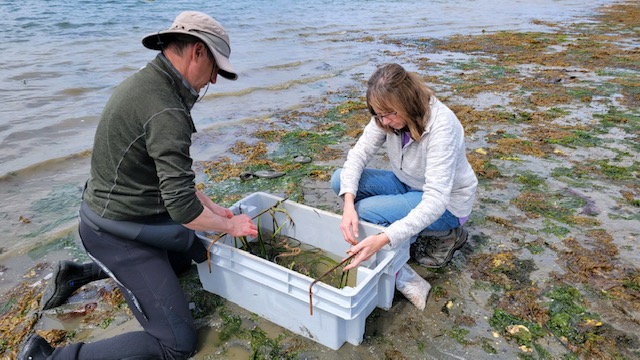
At 1:45 p.m., when the tide was -2.8, Jeff was in the shallow water looking, feeling, and even smelling the substrate for the most favorable conditions. Water depth was a consideration too. The plants thrive where water is deep enough to provide protection but shallow enough to allow sunlight absorption.
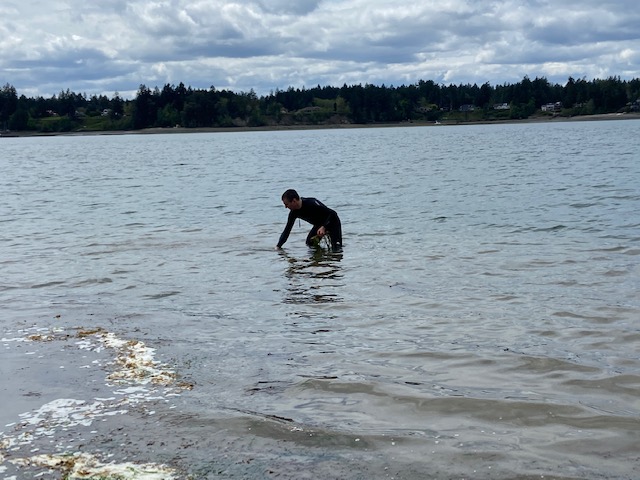
Rod by rod, he lowered the plantings into the water, quickly and easily anchoring the short, bent section of rebar into the sediment.
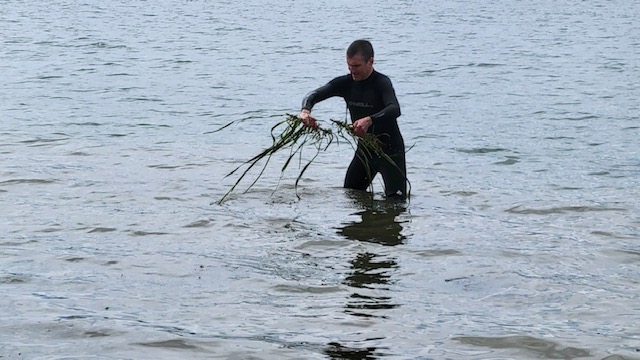
Jeff will retrieve the rods at the end of summer 2023 if the starts fail. If the starts are successful, he’ll recover the rods (by slipping them away from the plants without disturbing their roots) in the spring of 2024.
This underwater photo shows a rod planted and resting on the substrate from a planting elsewhere in Puget Sound.
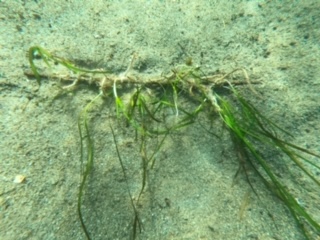
Like plants that grow on land, eelgrass uses carbon dioxide and sunlight to produce oxygen in the water, which is crucial to produce a complex food web, says Jeff.
Even though eelgrass is primarily hidden from view except at extremely low tides, the blades slow down water currents while their roots hold sediment in place. Animals like clams, crabs, worms, snails, and fish find food, shelter, and a place to reproduce among the blades.
We’re thankful for this opportunity to test our cove for eelgrass viability. We hope it grows, prospers, and loves living here! Please stay tuned for upcoming information about volunteer opportunities to support local eelgrass restoration efforts.
